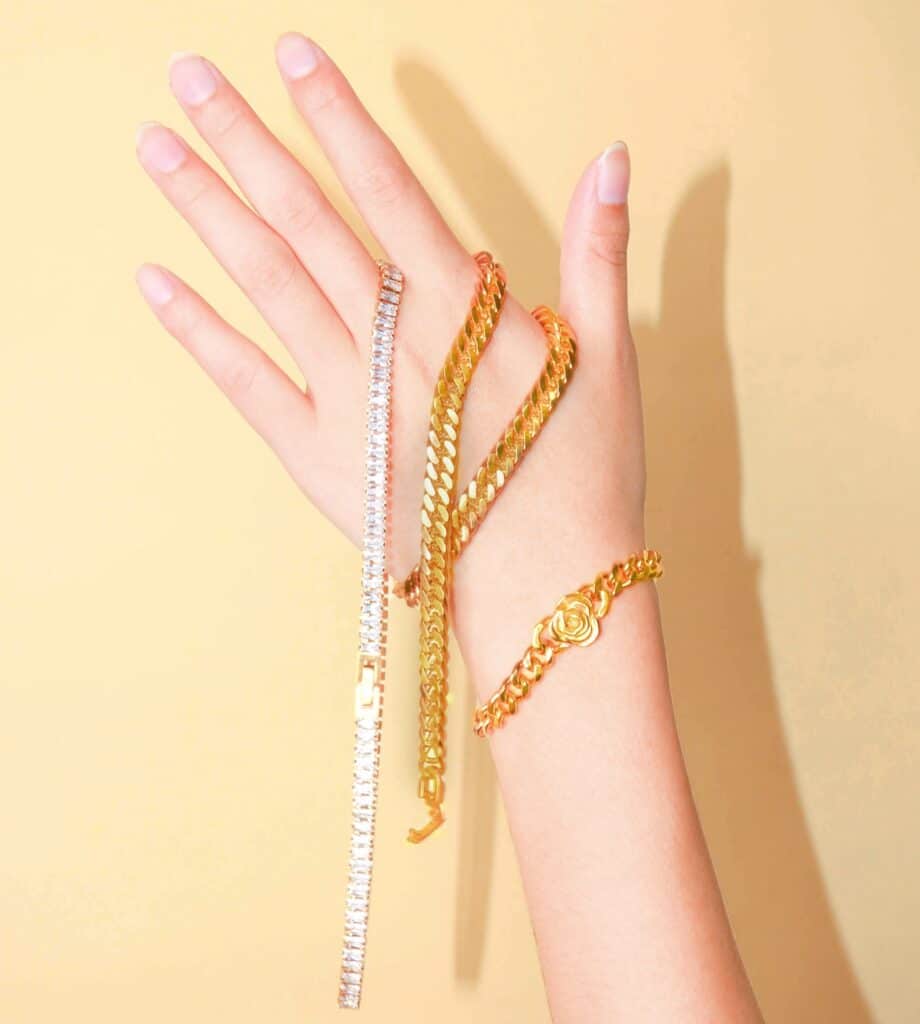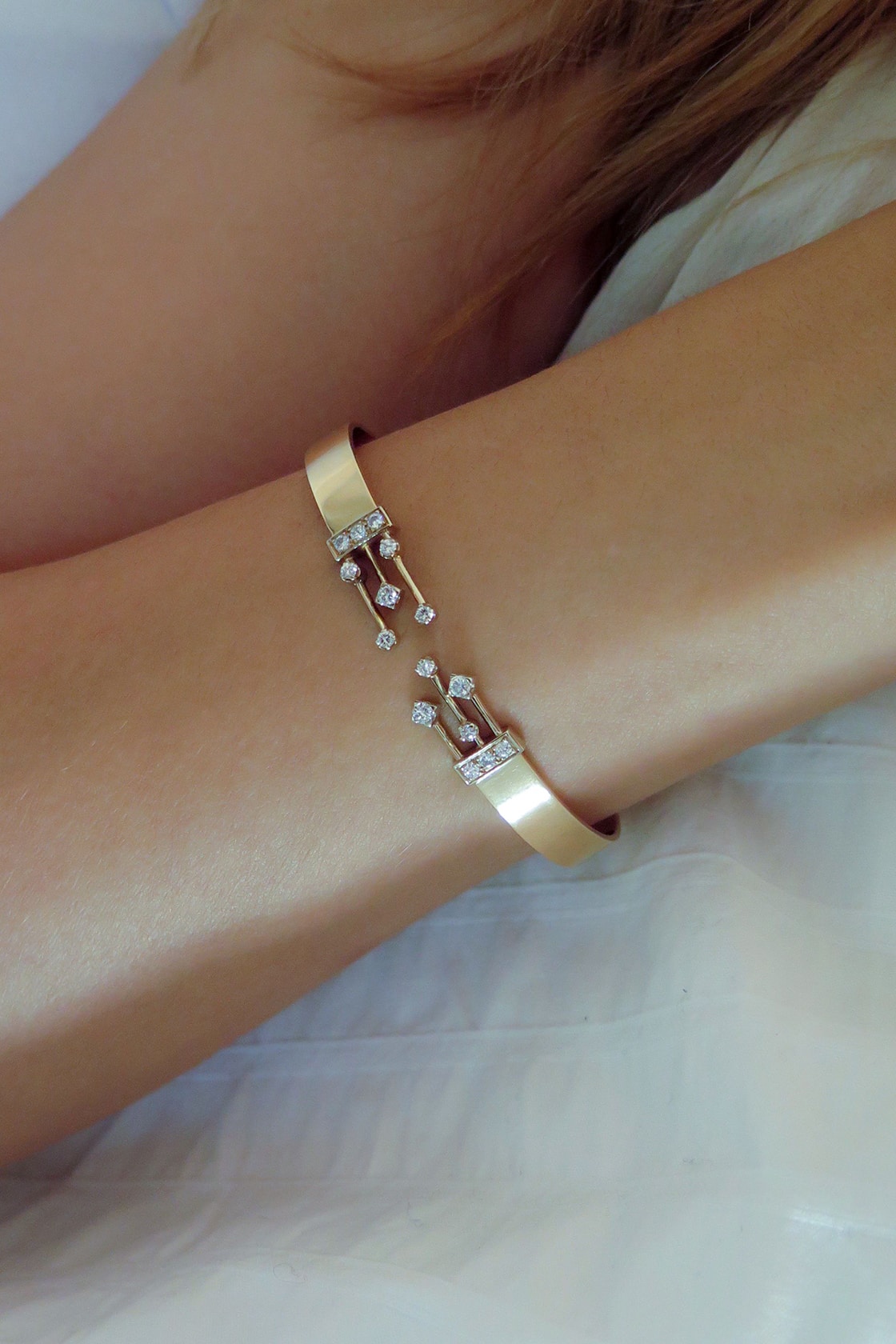Blog
Luxury jewelry: sublime precious metals in the spotlight
Luxury jewelry is built on the perfect harmony between artistic talent and the magnificence of materials. At the heart of this beautiful symphony stand out the three most iconic metals: gold, silver, and platinum. Each of them brings its own magic and brilliance to jewelry creations. Through their exceptional craftsmanship, Atelier Bravig explores these exquisite precious metals to create exceptionally elegant jewelry.
The physical and chemical properties of precious metals
Precious metals such as gold, silver, and platinum possess unique physical and chemical properties that set them apart from other materials. By fully understanding these properties, luxury jewelry artisans can create exceptional pieces that embody elegance, durability, and heritage, making each piece a timeless work of priceless value.
- Density: Precious metals are characterized by their high density. Gold, in particular, is one of the densest metals, giving it a sense of exceptional weight and solidity. This high density is a valuable asset in jewelry, allowing the creation of both compact and luxurious pieces.
- Malleability: A distinctive feature of precious metals is their great malleability. They can be hammered, stretched, and shaped into extremely thin sheets while retaining their structural integrity. This characteristic makes them ideal materials for creating intricate and detailed jewelry.
- Corrosion Resistance : Precious metals do not easily oxidize or rust, making them ideal for long-term use, especially in jewelry that is often exposed to various environments.
- Electrical and Thermal Conductivity : Silver, in particular, is known for its remarkable electrical and thermal conductivity. This is why it is widely used in the jewelry industry to create both aesthetic and functional pieces.
The Colors of Precious Metals
Gold and silver come in a dazzling range of colors, each with its own charm and unique appeal.

Different Gold Colors
- Yellow gold is the classic embodiment of luxury. Its deep golden hue results from the purity of gold itself, which is naturally yellow.
- White gold, highly appreciated for its timeless elegance, obtains its silvery color by adding metals such as palladium, nickel, or zinc to pure gold. To enhance its appearance, white gold is often coated with a thin layer of rhodium, a precious metal, through a process called “rhodium plating.” This not only accentuates the silvery color but also protects the jewelry from oxidation and corrosion, ensuring its durability and luster for generations.
- Rose gold, sometimes called red gold, is a warm and alluring shade. Its color comes from adding copper to pure gold, creating an alloy that combines the softness of gold with the depth of copper.
- Red gold est une is a more intense variant of rose gold, resulting from a higher proportion of copper in the alloy. This rich hue evokes passion and boldness.
Different Silver Colors
Unlike gold, pure silver is naturally white. However, it tends to tarnish over time due to its reaction with the oxygen in the air. To prevent this, silver is often alloyed with other metals, such as copper, to create sterling silver. This version of silver retains its white color while being more resistant to corrosion.
Origins of Colors: Alloys, Blends, and Manufacturing Processes
The various colors of precious metals mainly result from the composition of alloys. By modifying the proportion of alloying metals added to gold or silver, jewelry artisans can achieve an endless range of colors and shades, giving rise to unique pieces that reflect the personality and style of their owner. These complex and meticulous manufacturing processes allow for the creation of jewelry that transcends mere materiality to become true works of art.
Pros and Cons of Wearing White Gold and Silver
Carefully weighing the pros and cons of white gold and silver allows you to choose the precious metal that suits your needs, lifestyle, and aesthetic preferences. It also ensures that your jewelry remains beautiful over the years.
Pros and Cons of White Gold
White gold, in addition to its timeless elegance, stands out for its sophisticated silvery hue and subtle luster, making it the preferred choice for those seeking jewelry that combines refinement and discretion. Its versatility is also expressed in its compatibility with various gemstones, offering a multitude of options in jewelry design, whether classic or contemporary. Moreover, compared to other precious metals, white gold is more affordable without compromising quality or aesthetics.
One of the main drawbacks of white gold is the need for regular maintenance to preserve the beauty of the jewelry. To maintain its color and silvery luster, white gold jewelry needs periodic rhodium plating. Although this procedure is relatively simple, it can entail additional costs. Some white gold jewelry may also contain nickel, a metal that can cause allergies in sensitive individuals.
Pros and Cons of Silvert
The affordable price of silver offers the opportunity to access quality jewelry without breaking the bank. Additionally, its lightweight nature makes it ideal for everyday jewelry, ensuring maximum comfort throughout the day. Silver also has natural antibacterial properties, making it a hygienic choice for regularly worn jewelry.
However, silver tends to oxidize when exposed to air and moisture, which can result in the tarnishing of the jewelry’s surface. Regular maintenance is necessary to preserve its luster.
What’s the Difference Between White Gold and Platinum?
White gold or platinum? Although similar, each of these metals has its own distinctive characteristics, making the choice challenging. The differences between white gold and platinum lie in composition, color, durability and resistance, and price.
Composition and Purity
White gold is primarily made of pure gold, with the addition of 25% other metals to give it its characteristic silvery hue. The purity of white gold is measured in carats, ranging from 14 carats to 18 carats, where 24 carats represent 100% pure gold.
Platinum, on the other hand, is a metal that is 95% to 98% pure. This means it is inherently denser and heavier than white gold. Platinum is also an excellent choice for those who are allergic to nickel, a metal often alloyed with yellow gold to produce white gold.
Color
Although similar, white gold and platinum do not have the same color. White gold has a silvery hue, regularly maintained by the layer of rhodium that provides a whiter and brighter finish, while platinum has a natural grayish hue that does not change over time.
Durability and Resistance
Platinum is exceptionally durable and resistant to wear. It is less prone to scratches and damage compared to white gold, making it ideal for daily-wear jewelry.
Price
Due to its rarity and purity, platinum can be substantially more expensive than white gold. Approximately 150 tons of platinum are extracted each year, a significantly smaller quantity compared to white gold, which amounts to nearly 1,500 tons. This difference in volume and composition makes white gold more accessible to some buyers..
Luxury jewelry is a world where precious metals shine with all their splendor. Gold, silver, or platinum, each offers its own aura of magnificence. The harmony between precious metals and the expertise of Atelier Bravig reveals the quintessence of luxury in each of its creations.

 Français
Français




